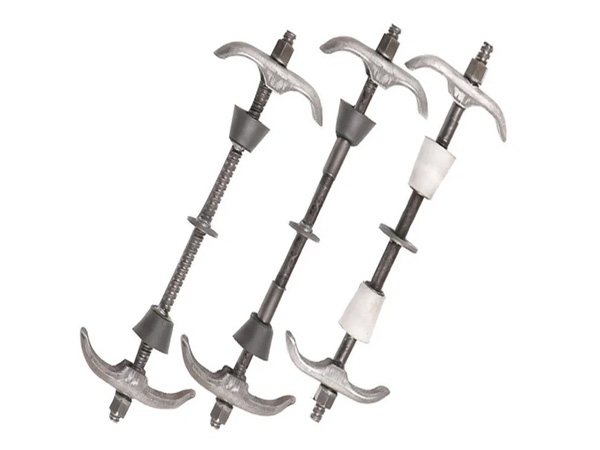- Site Navigation -

Wall-Through Screw
A wall-through screw(also called a through-wall screw or long-threaded anchor)is a type of fastener designed to penetrate entirely through a wall or panel to secure objects on both ......
Wall-Through Screw:Overview
A wall-through screw(also called a through-wall screw or long-threaded anchor)is a type of fastener designed to penetrate entirely through a wall or panel to secure objects on both sides.Unlike standard screws that engage only one side of a material,it typically uses a nut and washer on the opposite side to create a clamped connection.This design provides high pull-out resistance and uniform load distribution,making it ideal for heavy-duty mounting in construction,HVAC,and electrical installations.
Key Features&Design
Material:
Made from carbon steel(Grade 4.8/8.8),stainless steel(A2/A4 for corrosion resistance),or hot-dip galvanized steel.
Lengths range from 50mm to 500+mm to accommodate varying wall thicknesses.
Thread Design:
Fully threaded or partially threaded shafts for adjustable grip.
Self-tapping tips available for easier penetration into masonry or metal.
Components:
Includes washers and nuts to distribute pressure and prevent crushing of brittle materials(e.g.,drywall,insulation panels).
Optional sealing gaskets for waterproofing in exterior applications.
Applications
Structural Mounting:Securing brackets,frames,or shelves to masonry/concrete walls.
MEP Systems:Installing pipes,conduits,or ventilation ducts through walls.
Facade Cladding:Attaching panels or sunshades to building exteriors.
Temporary Structures:Fastening temporary signage,fences,or stage equipment.
Installation Process
Drilling:A hole is drilled through the entire wall using a hammer drill or core bit.
Insertion:The screw is passed through the object and wall.
Fastening:A nut and washer are tightened on the opposite side to the required torque.
Sealing:For outdoor use,silicone or butyl tape is applied to prevent water ingress.
Advantages
Bidirectional Load Distribution:Resists pull-out forces from both sides.
Adaptability:Works with solid walls(concrete,brick)and hollow materials(drywall with toggle anchors).
Cost-Effectiveness:simpler alternative to chemical anchors for medium-duty applications.
Reusability:Can often be removed and reinstalled if needed.
Limitations
Wall Damage:Penetration may compromise insulation or waterproofing if not sealed properly.
Corrosion Risk:Carbon steel versions require coatings for humid environments.
Installation Access:Requires access to both sides of the wall for nut tightening.
Technical Standards
Complies with ISO 898-1(mechanical properties of fasteners)and ASTM A307(carbon steel bolts).
Load ratings depend on substrate material and screw diameter(e.g.,M10 screw in concrete:~15 kN shear strength).
Safety Notes
Pre-Drill Accuracy:Hole diameter must match screw size to avoid loosening.
Torque Control:Over-tightening may strip threads or damage walls;under-tightening reduces grip.
Substrate Assessment:Avoid use in cracked concrete or weak masonry without reinforcement.
Conclusion
The wall-through screw is a versatile,robust fastening solution for applications requiring deep penetration and balanced load transfer.Its simplicity,strength,and adaptability make it a go-to choice for contractors in construction and utilities.Proper installation and environmental considerations are key to ensuring long-term reliability.








